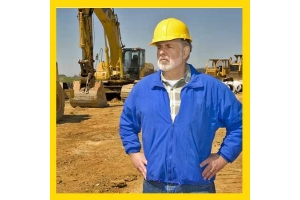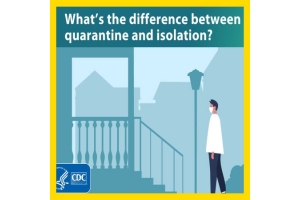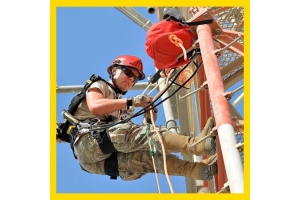Currency
-
January 29, 2020Industry sectors:
Safety and Security
Security Show (Security Show ) takes place in Chiba/Tokyo, Japan from 03.03 to 06.03.20 at Makuhari Messe.
Takes place every year
Show Dates: March 03-06, 2020
Time: 09:00 to 17:00
Venue: Makuhari Messe, Chiba/Tokyo, Japan
, -
January 25, 2020As of Oct. 1, the Occupational Safety and Health Administration (OSHA) has begun using a new system for weighing and measuring its enforcement priorities that now includes added emphases depending on the type of hazard inspected and whether the actions were taken in pursuit of agency enforcement initiatives.
“Because weight will now be given to these areas, employers should be prepared for inspections related to high hazards and specific OSHA enforcement initiatives,” warn attorneys Jayni Lanham, Heidi Knight and Mark Duvall of the law firm of Beveridge & Diamond PC.
In its Sept. 27 announcement of the changes, OSHA said that it “will encourage the appropriate allocation of resources to support OSHA’s balanced approach of promoting safe and healthy workplaces, and continue to develop and support a management system that focuses enforcement activities on critical and strategic areas where the agency’s efforts can have the most impact.”
Under the new system, -
January 25, 2020The health risks associated with exposure to the fume produced when welding mild steel just got worse. Mild steel welding fume is now considered to be a carcinogen, according to research by the International Agency for Research on Cancer (IARC). Welding fume particles are extremely small and when inhaled they can penetrate to the very deepest part of the lung where they may be deposited or absorbed by the body.
In response to this classification, some government agencies are already taking action and others are likely to follow. The United Kingdom’s Health and Safety Executive (HSE) has reclassified mild steel welding fume as a human carcinogen and released a safety alert prompting employers and workers to drastically increase controls to reduce occupational exposure and the occupational cancer risk. IARC’s new scientific evidence shows that exposure to all welding fume, including mild steel welding, can cause lung cancer. IARC’s study also suggests some evidence linking exposure -
January 25, 2020For the ninth year in a row, fall protection is once again the top most frequently cited workplace safety violation in the United States. The Occupational Safety and Health Administration’s Top 10 list was revealed today at the National Safety Council’s annual congress and expo in San Diego, Calif.
“Far too many preventable injuries and deaths occur on the job,” said Lorraine M. Martin, president and CEO of the National Safety Council. “The OSHA Top 10 list is a helpful guide for understanding just how adept America’s businesses are in complying with the basic rules of workplace safety. This list should serve as a challenge for us to do better as a nation and expect more from employers. It should also serve as a catalyst for individual employees to re-commit to safety.”
Also of note is that eye and face protection, a newcomer to last year’s list, remains in the number 10 spot for this year.
-
January 25, 2020The ability to control our own destiny is a very basic human desire.
While we have control over many aspects of our lives, sometimes in our workplace we lack this ability. However, this is starting to change as technology is being applied to help us optimize working conditions, especially when it comes to safety.
This is especially helpful in a warehouse setting in cases where simply performing a job can lead to injuries. In fact, 35% of workplace injuries are due to poor ergonomic practices.
To help turn that statistic around, Soter Analytics is providing wearable technology that provides information to workers on an individual basis.
While traditionally safety managers have provided information on the optimal way to perform injury-prone jobs, the responsibility is now moving over to individuals.
“We are flipping the process around,” explains Matthew Hart, CEO of Soter Analytics. “We are looking at the safety issues for one person, -
January 18, 2020The U.S. Department of Labor’s OSHA cited Apex Roofing and Restoration LLC, and WW Restoration LLC for exposing employees to fall hazards. This came after a 15-year-old worker suffered fatal injuries after a fall at a site in Cullman, Alabama. The company is facing penalties that total $159,118.
Roofing workers are particularly susceptible to falls, and OSHA cited this company for exposing its employees to fall hazards while performing roofing activities without the appropriate fall protection or training. Apex Roofing and Restoration LLC is a separate entity from WW Restoration, but OSHA cited the companies as a single employer because both “share supervision on a common worksite, and have interrelated operations and integrated working relationships” according to OSHA’s news release on the subject.
Proper training and protection are crucial to ensuring worker safety. OSHA -
January 18, 2020Top safety leaders create a safety culture that shifts from a minimum requirement of compliance to a workforce where employees are committed to working safely. Safety leaders know that safety starts and ends with the people. It’s not about the confusing jargon, acronyms, abbreviations, and the piles and piles of paperwork. It’s about the deep trust that exists between the company and the workers.
Safety leaders agree that compliance is important. Compliance is the rules, regulations and laws that are necessary for a safe workplace. For this article I spoke to three safety to leaders to better understand how they moved from understanding and knowing the rules and regulations to being committed to operating safely always. It all comes down to trust!
Trust is the ability to be open, vulnerable and courageous based on positive expectations. It’s based on five tenets of trust: -
January 18, 2020The majority of firefighters and paramedics are fearing for their lives while at work, according to a report out of the University of Manitoba.
Six in 10 firefighters and seven in 10 paramedics felt their lives were at risk while engaged in the line of duty in the past year, according to the study lead by Jennifer Setlack. Her research was based on a survey of 117 firefighters and 129 paramedics from the Winnipeg Fire Paramedic Service.
Also, 84 per cent of firefighters and 85 per cent of paramedics felt that they were at risk of serious physical injury while engaged in the line of duty in the past year.
Setlack also found that 10 per cent of firefighters and 19 per cent of paramedics had significant difficulties with post-traumatic stress disorder, and 26.4 per cent to 27.9 per cent of paramedics indicated moderate to extreme levels of depression, anxiety -
January 18, 2020Effective July 1, Ontario is adopting changes to its occupational exposure limits (OEL) or listings for 36 chemical substances based on recommendations by the American Conference of Governmental Industrial Hygienists (ACGIH).
The changes include the addition of listings for boron trichloride, calcium silicate (naturally occurring as wollastonite), hard metals (containing cobalt and tungsten carbide), simazine, acetamide, cadusafos and folpet, and the removal of listing and OEL for calcium silicate (synthetic nonfibrous).
The changes also include revisions to exposure limits or listings for 19 substances currently regulated, such as boron tribromide, furfuryl alcohol and tungsten, and the addition or removal of notations for nine substances, such as acetylene, butane (all isomers) and hydrogen.
On Jan. 1, the province changed the periodical medical examination -
January 12, 2020How successful organizations value safety reveals how they really care for their people. Worker safety is paramount for any organization that strives to be high functioning. Companies that protect their workers—their most valuable resource—are better positioned to achieve positive results on stock value, productivity and cost control.
Some would say committing to safety is easy when the money is flowing and resources are available. But what happens when times get rough: an economic downturn, leadership changes, near bankruptcies, or other business challenges that threaten the company’s stability? How do you keep the focus and energy on safety and exposure control when consumed with efforts to consolidate, eliminate redundancies, shutter divisions, or cut programs deemed not necessary to surviving the crisis? How do you protect the culture, employee relationships and the people working at the front line?
At some point the crisis will pass and more normal business









